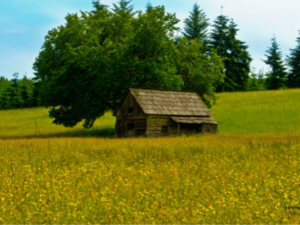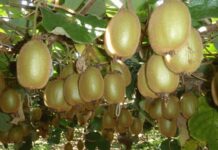
In the past decade where modern farming methods have been playing a pivotal role in the production of agricultural produce at a massive scale within a harvest season, it has induced the signs of prolonged illnesses, soil erosion and ecological disturbance which affects the health of people situated across far stretches of the natural habitats. Presently, while climate change is proving to be a prominent global topic Sustainable agricultural practice seems to shed light on inculcating the importance attributed to our basic needs to replenish the resources such as land, water and air. Greenhouse farming techniques include environmental, financial and social elements that are connected to farmers with improved value, independence, diminished toxins, and great living potential.
An Effective Off-Season all-round protection
A greenhouse is a compact shade house comprised of solid opaque walls and roof made mainly of transparent material, such as polyethylene films or Composite less-reflective glass in which plants are cultivated. These buildings can be merely small structures, or they can also be quite large. It protects plants from extreme cold or heat and undesirable pests. Concise netting on all sides decreases insect attack by 90%. A greenhouse cover makes it conceivable to develop particular varieties of crops all the season long, and organic fruits,
tobacco plants, vegetables, and flowers are what a Greenhouse mostly grows to keep up-regulated food supply.
 Larger production volumes and impressive food quality
Larger production volumes and impressive food quality
There are numerous advantages to using Greenhouse innovation. For instance, plants are grown under such a favorable environment give a yield that is up to 7 times larger than cultivations obtained in the open. As the plant does not squander energy from its metabolism to hamper physiological protections for shielding itself using this energy in development and production, Greenhouse greatly helps to improve the quantity and quality of the crop. It is quintessential as a greenhouse grower to retain the stability of pH over the sugars and the nutrients absorbed by the soil in which a particular crop is being cultivated. There are several characteristics affecting pH levels in the growing constituents. The pH levels can fluctuate within several intervals of the crop cycle and if the deficiency symptoms are witnessed, the health of the crop has already degraded and in turn, the value inherited by the yield.
Considerable reduction in Carbon footprint and economies of scale.
The setting up of the greenhouse is inexpensive, with lower resources and creates a smaller carbon footprint that roughly involves 2% of the land area of typical farmland in India. The layers of shade netting on the top lessen the temperature by 5 to 8 degrees celsius. A profitable nursery, of course, needs more than a greenhouse. The inclusion of an efficient drip irrigation system with adequate shade reduces heat and dissipation and cuts water utilization by 90%. Small-scale customized vegetable production offers great potential for farmers produce and markets offering niche segments through ‘greenhouse in a box’ simple, low-cost greenhouse covers that can occupy less than half area of the farm. This has enabled the farmers to grow regular crops, which assures them all-year income.
 Excellent Technological Superiority
Excellent Technological Superiority
Thanks to the technology, now that affordable greenhouse system design and management model is the reason behind exponential returns. The newer forms of ambient temperature control systems use one of the advanced irrigation controllers. The evaporative cooling in the mechanism creates moisture that reduces the temperature and the atmospheric humidity accordingly to benefit of the crops. Due to the advent of digitization with the world’s first irrigation system with Dynamic Crop Models™ in the developed countries of Israel it is now possible to supervise every component of your greenhouse to make sure the right amount of water and nutrients get apportioned to each plant – at the right time.
Source- https://www.netafim.com/en/digital-farming/digital-Farming-protectedcrops/
Advantages of Green House Farming:
– The greenhouse can add more periods to the plantation season. The framework of the greenhouse is designed with ventilation fans to trap warmth from within.
– A greenhouse material comes in a range of shapes and sizes that can fit your budgets.
Greenhouse Gardening is one of the most popular off-season activity, to support the alternate season of horticulture as well as for floriculture. Since it backs them to grow flowers and initiate pollination until the rest of the year.
– A greenhouse garden can be built cheaply incorporating plastic or glass, and look attractive or simply utilitarian. After choosing a great location for a greenhouse garden, you can build one yourself by ordering a greenhouse kit from any number of popular manufacturers
– Greenhouse agriculture yield enjoys a better shelf life and greater productivity.
– Greenhouse production focuses on the optimum utilization of resources thereby maximization of large output with lesser inputs.
– Greenhouse farming can be started with marginal lands and soil-less infrastructure.
-The payback period for procuring return on investments for Greenhouse farming ranges from 1.5 to 2 years.

 Larger production volumes and impressive food quality
Larger production volumes and impressive food quality Excellent Technological Superiority
Excellent Technological Superiority



